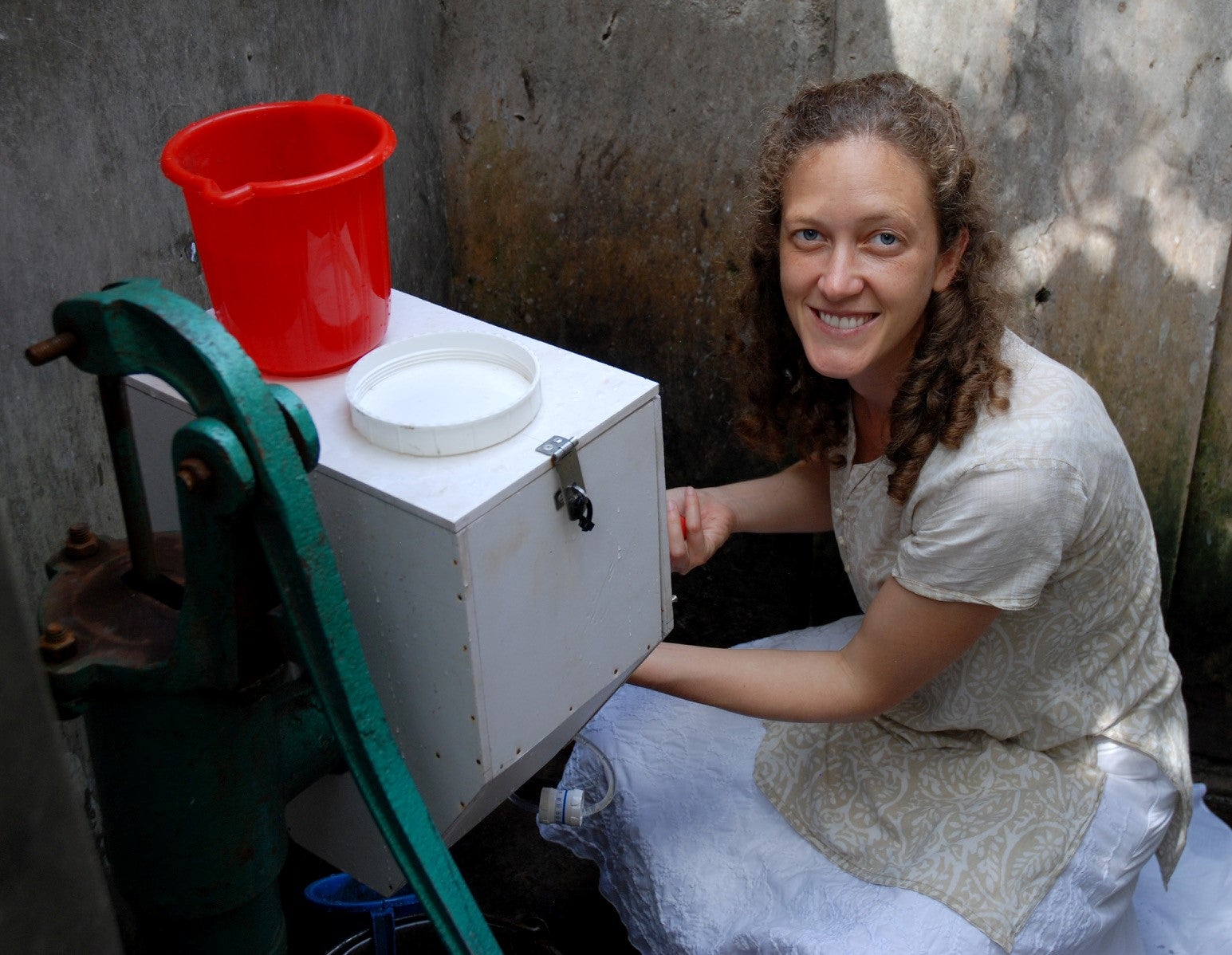Amy Pickering laughs when she thinks of all the things that went wrong with the impact evaluation she recently completed of a water chlorination project in the slums of Bangladesh’s capital city Dhaka: delays, monsoons, and more delays.
“It was the hardest project I’ve ever done,” says the seasoned research engineer, now a professor at Tufts University, who was working on a project funded through the World Bank’s Strategic Impact Evaluation Fund.
Clean water is an issue in Dhaka and other overcrowded cities in the region, where contamination by bacteria can lead to high rates of diarrhea, harming children’s growth and health. For Pickering, who specializes in water quality and diarrheal disease, the challenge was finding a water treatment technology that could work without electricity and operate in Dhaka’s extreme weather.

Together with Stanford University’s Stephen Luby, Pickering assessed a novel treatment product that automatically dispenses small amounts of chlorine to create safe drinking water. The dispensers were installed at strategic water points – usually communal handpumps -- that typically serve anywhere from 10 to 100 families.
The impact evaluation study provides critical evidence on how to use simple, low-cost technology to make water safe in dense, urban areas that lack reliable energy sources. Results of the evaluation are expected in Fall 2017.
In a recent conversation with SIEF, Pickering talked about the problem with pipes in Dhaka, the business of clean water, and what’s on her mind every time she goes to the faucet.
Why focus on individual water points—in this case, handpumps or taps in communal areas—rather than create a centralized solution before the water is pumped to these water points?
In many urban areas across the developing world, there’s not enough water to meet demand and so water is sent to different parts of the system during different hours of the day. Because the system isn’t fully pressurized at all times, contamination and sewage seep into the system. The solution, therefore, couldn’t be centralized.
What are ‘point of collection’ treatments and how are they different from what’s already out there?
There’s been a push to get individual families who rely on shared water sources to treat their own water supply—called treating at the point-of-use—but it hasn’t been very successful. These programs focus on getting households to add their own chlorine manually, but that involves people buying their own chlorine, calculating the correct dosage, and remembering to add the chlorine daily. We wanted to try something that was automated and required minimal effort. This way, people filling containers with water don’t have to do anything to make it clean. Safe water out of the tap becomes the default.
What was the process like?
It turns out getting the system up and running was more difficult than I imagined. To start, I assumed that we’d be able to find an off-the-shelf technology that we’d be able to customize. But nothing existed that would work without electricity, in high temperatures, and in the extreme weather conditions of monsoon season in Bangladesh. We eventually got in contact with Medentech, an Irish company. They had already designed a chlorine doser for animals, and were in the process of adapting it for people and so we partnered with them for the evaluation. It’s a very simple technology that doesn’t require electricity. The chlorine refills are simple and safe to swap in and out.
Are residents willing or able to pay?
This evaluation got us thinking about that very question. The water points were in public locations in one of the study sites, but in the second study site they were all located on private compounds, and so we started working on another project to determine how much landlords would be willing to pay for clean water. We developed marketing materials and a sales pitch to landlords, showing that they could recover their costs by advertising safe water and charging higher rents. Landlords were able to bid to have the clean water service in their compound if: they bid high enough, they won the auction, and got the device installed with the chlorine refill service. We structured it to help us understand the business model that would work for scaling up. So far, it looks like landlords are willing to pay around $50 per year for the service. We don’t have an estimate yet for total cost of installing and operating the chlorine dispenser at scale, but the $50 should cover a bulk of the cost.
What was it like getting landlords interested?
We had to convince them that chlorine water is safe and that it’s used throughout the developing world. We did taste experiments to see what level of chlorine could be detected because we didn’t want the residents to be turned off by the taste of chlorine.
What’s next?
We plan to disseminate the results to the Bangladesh government and other organizations working on increasing access to safe water later this summer with the hopes that they are interested in implementing the chlorine dosers. We are also now expanding the project to roadside water stands in Kenya, and working on a business model that would work in other countries.
Finally, does this make you think more about the water you drink?
This research definitely increased my awareness of water quality and safety, even in my home town. Public water in developed countries is generally very safe, but there are still contaminants, like lead, and I do sometimes worry about that when my kids drink. I am so grateful that I can just go to the sink and get a glass of clean water!
Tweet these:


Join the Conversation